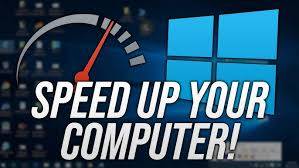Speeding up your PC or computer can improve performance, making it more responsive and efficient. Here are some practical tips to help you boost your PC’s speed:
1. Clean Up Hard Drive Space
A cluttered hard drive can slow down your computer. Start by deleting unnecessary files, old downloads, or unused programs. Use the built-in disk cleanup tool to remove temporary files, system cache, and browser history. Regularly cleaning your drive helps in maintaining speed.
2. Defragment Your Hard Drive (HDD)
For traditional hard drives (HDD), defragmenting is important. Fragmentation occurs when data is scattered across the disk, making it harder for the system to access it. Use the built-in disk defragmenter tool in Windows to reorganize the data, which can improve access times. Note that if you use an SSD, defragmentation is unnecessary and could actually harm its lifespan.
3. Upgrade Your Hardware
If your computer is still slow despite performingother optimizations, upgrading certain hardware components can have a significantimpact. Consider adding more RAM (8GB or higher is ideal for most users) or upgrading to a solid-state drive (SSD). SSDs are much faster than HDDs, leading to quicker boot times and faster program loading.
4. Disable Startup Programs
Many programs automatically start when you boot up your PC, consuming valuable resources. Open the Task Manager (Ctrl + Shift + Esc) and go to the "Startup" tab. Disable unnecessary programs from starting up with Windows, which will reduce the load on your system and improve boot time.
5. Update Your Operating System and Drivers
An outdated operating system or drivers can cause performance issues. Regularly check for system updates and install any available patches. This ensures your computer runs smoothly and takes advantage of performance optimizations and security fixes.
6. Remove Malware and Bloatware
Malware or unnecessary software (bloatware) can significantly slow down your computer. Run a full system scan using an antivirus program to remove any malicious software. Additionally, uninstall any pre-installed programs or apps that you don’t use, as they can take up valuable system resources.
7. Adjust Power Settings
For laptops, adjusting your power settings can also improve performance. In Windows, set the power plan to "High Performance" to ensure that your CPU is running at full capacity rather than being throttled to save power.
8. Reduce Visual Effects
Windows has several visual effects that can use up resources. You can adjust these settings by going to "System Properties" and selecting "Adjust for best performance." This will turn off many animations and effects that might be slowing your system down.
By following these steps, you can significantly speed up your PC and improve its overall performance.


